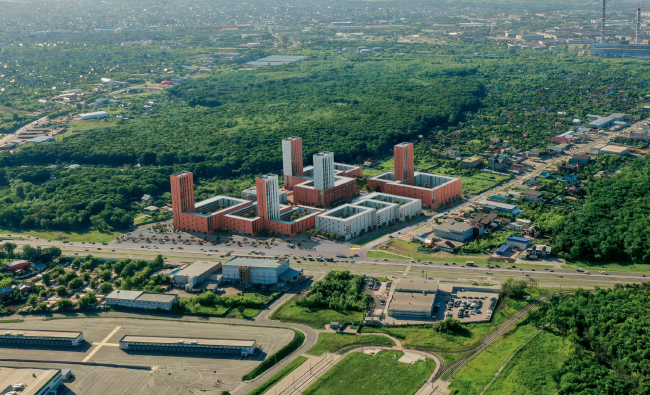|
Published on Archi.ru (https://archi.ru) |
|
| 11.03.2021 | |
|
Yards and Towers: the Samara Experiment |
|
|
Julia Tarabarina |
|
| Architect: | |
| Sergey Skuratov | |
| Studio: | |
| Sergey Skuratov architects | |
|
The project of “Samara Arena Park”, proposed by Sergey Skuratov, scored second place in the competition. The project is essentially based on experimenting with typology of residential buildings and gallery/corridor-type city blocks combined with towers – as well as on sensitive response to the context and the urge to turn the complex into a full-fledged urban space providing a wide range of functions and experiences. The competition for “Samara Arena Park”, conducted by MAAM in the past 2020, was devoted to the concept of developing the land site not far away from the new arena, built in Samara for the World Soccer Championship 2018, at the northern outskirt of the city, on the way to the Kurumoch Airport. Almost simultaneously with it, another competition was conducted, for landscaping the land around the Arena – it was clear that Samara decided to give a serious thought to actualizing the territories lying along the Moscow Highway. The Arena Park is located south of the stadium, and, if we are to drive from the city center to the airport, it will be lying right of the highway. The site is essentially greenfield – a vacant lot for construction with rather pleasant surroundings: it is flanked by woodland on either side, with dacha estates lying south of it. The concept of the housing project near Samara Arena / competition project 2020The project ended up consisting largely of city blocks, where in the northern part, closer to the roads, as well as sports fields and playgrounds, galleries are mainly located – spaces for movement, not life, for which noise and poor insolation are not as critical as for bedrooms or living rooms. As a result, we are seeing a very unconventional planning approach: the thickness of the buildings that frame a city block varies from place to place because it is sometimes of the gallery type (consisting of one row of apartments), and sometimes of the corridor type (the apartments being grouped along the corridor, and the volume becoming thicker). Interestingly, the inner passage itself remains unbroken: the gallery bleeds into a corridor and vice versa, it meets the elevator halls, goes in loops, provides access to the neighboring block, and sometimes makes a zigzag, receding and making room for corner apartments. Furthermore, these corner apartments, mostly of a larger size than average, sometimes even stand out on their corners, not even trying to keep the contour intact, but, conversely, catching light and panoramas. Above the “thick” corridor volumes in the spots of the staircase-and-elevator cores, grow five landmark towers 22 stories high, which comprise 25% of the housing stock. The other 75% fall on the low-rise houses from five to seven stories high. 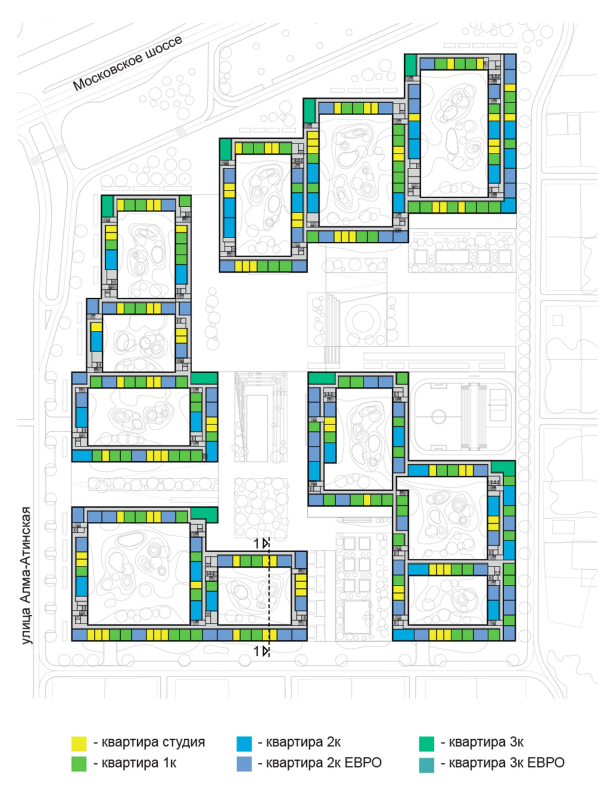 The concept of the housing project near Samara Arena / competition project 2020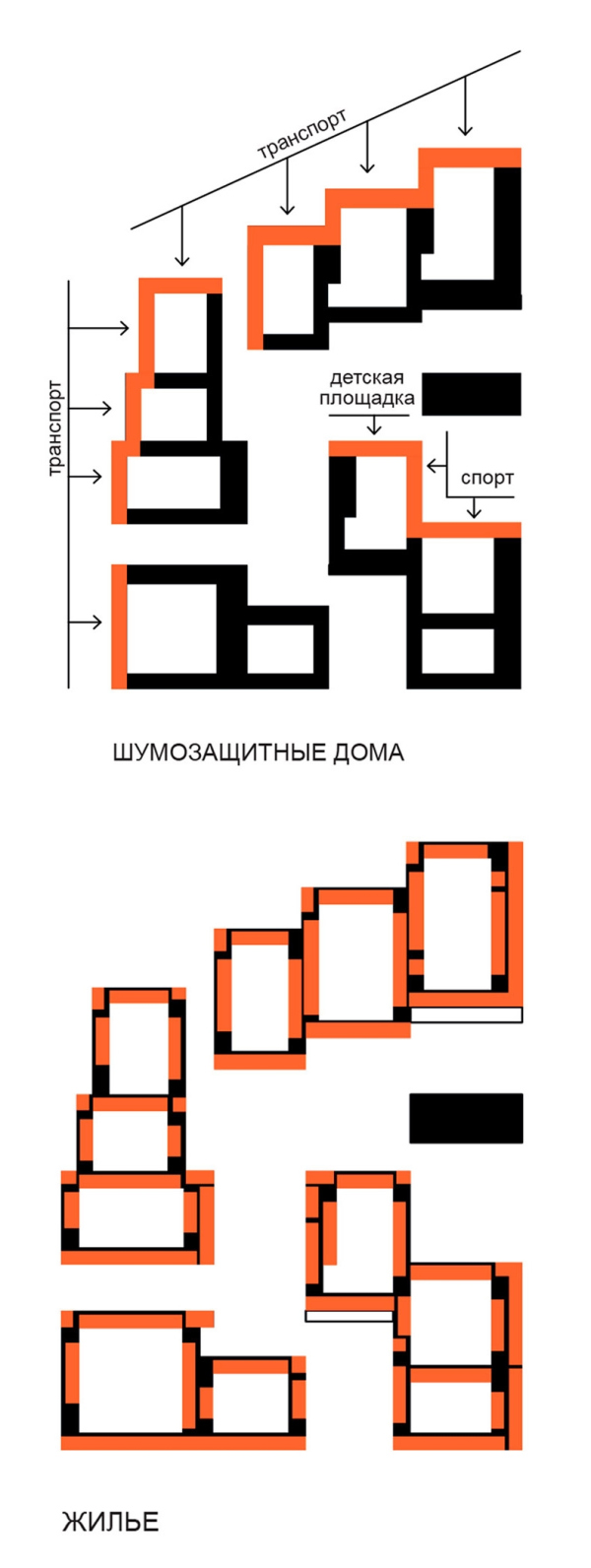 The concept of the housing project near Samara Arena / competition project 2020The proposed layouts, flexible and coherent, allowed the architects to save up on the staircase-and-elevator units: they are fewer than they would have been in a regular house, divided into narrow isolated sections. The adaptive character of the solution is highlighted by asymmetry: eleven blocks of different sizes are joined, like atoms, into molecules of two or three volumes, connected on the inside by galleries and corridors. The resulting composition has something of Brownian motion about it – one can see that it parametrically reacts to internal requirements and external conditions. The apartment design is focused on the dominance of small flats, dictated by the market: studios and one-room apartments totally account for more than a half of the complex (these layouts are particularly numerous in the corridor planning). However, the offered line includes the entire range up to 4-room abodes – in the towers. The set includes both traditional and “European” layouts with kitchens functioning as living rooms. But then again, according to the architects, the apartments are designed flexibly and can be fine-tuned – what the complex offers is the approach, and not a solution carved in stone, which is what makes it even more interesting. The concept of the housing project near Samara Arena / competition project 2020The low height of the blocks – we will note here that it decreases in the southern part, and increases to the north and towards the highway – made it possible to provide enough natural light to the courtyards. Interestingly, in order to make the yards as green as possible, the architects proposed to vacate their central parts from the underground car park: the single level of the car park gravitates towards the contours of the houses, and thus it will be possible to plant trees with a good root system in the center of each yard. We will also note that the degree of openness and closeness of the facades in the courtyard depends in a very noticeable way on the level of illumination: where the sun is, there is glass, where the shadow is, the walls prevail.  The concept of the housing project near Samara Arena / competition project 2020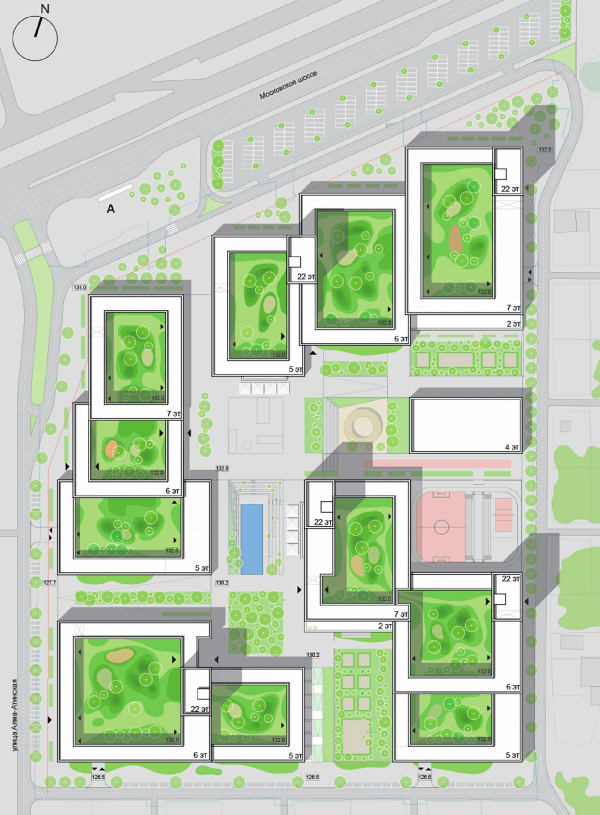 The simplified plan of the private yards. The concept of the housing project near Samara Arena / competition project 2020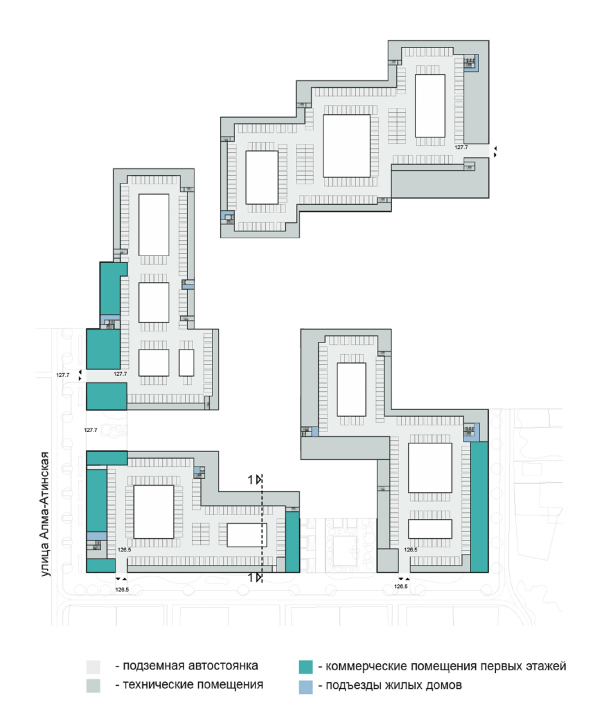 Plan of the -1st floor: car parks, public functions, and maintenance. The concept of the housing project near Samara Arena / competition project 2020It is here on the first floors that apartments with private little gardens appear. According to the concept, the yards are only accessible to the residents. 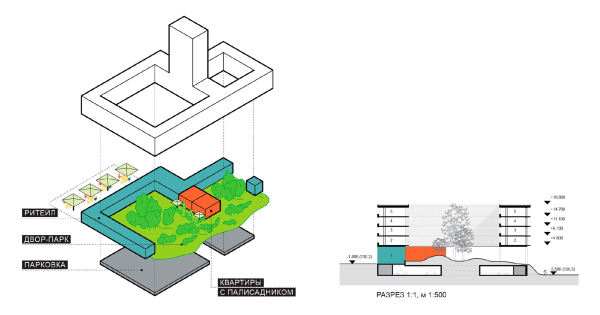 The plan for combining retail on the outer contour with little gardens in the yard. In the section view we can see the underground car park with “breaks” in the central parts of the yards. The concept of the housing project near Samara Arena / c The concept of the housing project near Samara Arena / competition project 2020However, it does not just come down to the composition of the houses with their experimental layouts and “garden” yards. Sergey Skuratov interprets his housing project as a mini-city, paying a lot of attention to public spaces inside. Between the blocks, city squares form, the territory of each of which is comparable in size to the in-block courtyard. This way, the spatial unit becomes common for the yard and the plaza, while their functions and accessibility are different – the architects interpret the inner squares as the “city yards” and include them into the overall count – thus, together with the public spaces, there are 16 yards, 11 private (residents-only), and 5 accessible to the city people. The 11 residents-only yards. The concept of the housing project near Samara Arena / competition project 2020The public spaces. The concept of the housing project near Samara Arena / competition project 2020The entrances to the territory of the complex are located on each of the four sides, practically in the cardinal points, between the blocks, open to the surroundings, but not exactly “wide-open”. Interestingly, the passage from the side of the noisy highway is relatively narrow – it also provides protection from the noise. The squares are grouped closer to the center, three of them are strung on the meridian axis: the main, “noisy” square intended for gatherings and events, paved almost entirely, is located closest to the highway; to the south, a pond area adjoins it, with an amphitheater by the water, further, closer to the dachas, a square – the activity seems to “dissolve in nature” from the highway to the quiet village. In the eastern part of the complex, between the blocks, there is a school; next to it, on the first floors of the residential buildings, there are two built-in kindergartens. Between the central square and the school there is a playground or a “children’s square” open to everyone, also with an amphitheater (note that both amphitheaters are built into the terrain, which rises here, in total, by 5 meters towards the highway, and in the center it has a drop of about 2 meters). South of the school, there is a “sports square”, fifth by count. The so-called commercial, a.k.a rentable, bottom floors with shops and cafes are grouped both on the outer contour of the complex and on the side of the inner plazas. 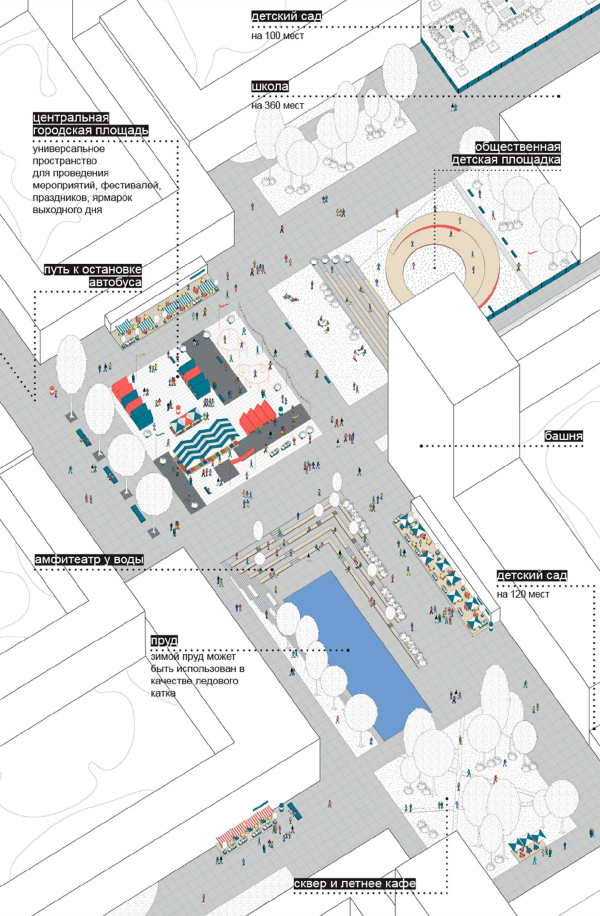 The concept of the housing project near Samara Arena / competition project 2020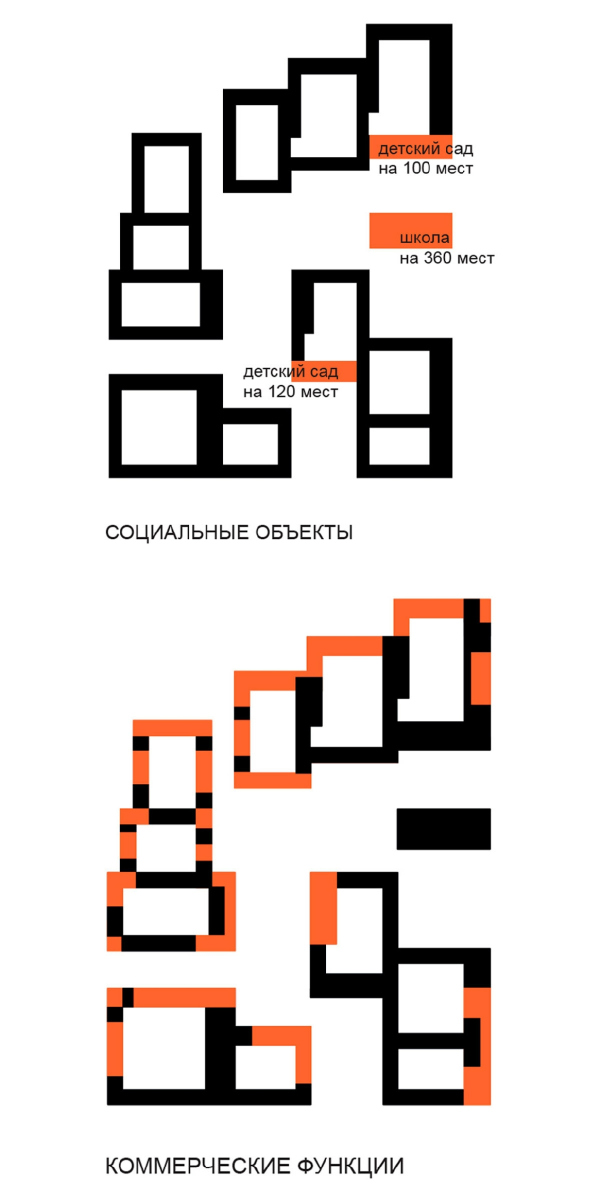 The concept of the housing project near Samara Arena / competition project 2020The entire volumetric and functional layout is interpreted as a mix of well-known morph types of urban construction: a square, a yard, and a tower – to which Sergey Skuratov makes a direct reference, presenting his project as a variant of a city tested by centuries. In other words, according to this experimental competition project at the edge of Samara, behind the belt of micro-district development, among forests, fields, dachas, and industrial parks, could arise a “small town” with quite diverse morphology and hierarchy of spaces, compact, structurally diverse, and well thought out.  The concept of the housing project near Samara Arena / competition project 2020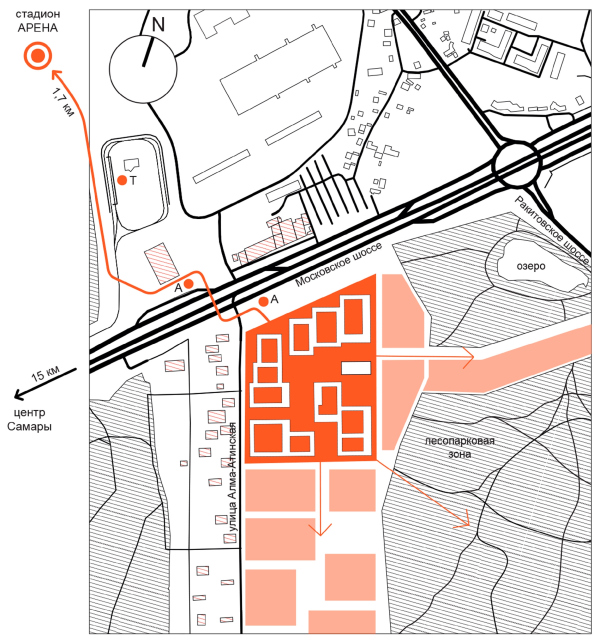 The concept of the housing project near Samara Arena / competition project 2020Outwardly, it does not imitate the forest environment at all, and does not try to present itself as a part of the natural relief – on the contrary, all lines and volumes are straight, rigid, very man-made and even somewhat brutal, even with a slight flavor of industrial architecture. To some extent, the town appears as a “fort” – mainly due to the straight contours and the closeness of the outer walls. Which, I will remind you here, provides protection from the outside noise, and is characterized by a much greater amount of glazing, and a greater number of courtyards. Tower houses also create the image of a solid and reliable town, which does not spread over the field, but is quite capable of “standing up for itself.” When viewed from a distance, the Sergey Skuratov complex looks like a countryside Renaissance estate somewhere in the fields of Lombardy: the collected and regular volumes present a striking contrast to the pastoral surroundings. The yards and the towers make one recall the Castello Sforzesco – we will note here, and this is important, that the analogies that appear here are based not on the “natural” medieval but on the renaissance city – the latter is more governed by the rational component and larger forms. And, besides, it is only the renaissance palazzo that can be characterized by a combination of a large green yard and an imposing tower; this is what makes it different from the cramped middle-age construction, where such yards could only be seen in the monasteries, and from the tenements of the XIX century, where both yards and towers were “squeezed” to yield more useful floor space. Basically, the experiment, carried out in this project, goes far beyond the confines of a purely planning task, and proposes some kind of a detailed, if not groundbreaking, version of block housing construction, not alien to, let’s say, traces of semblance with a number of historical prototypes. The concept of the housing project near Samara Arena / competition project 2020The façade color – Sergey Skuratov’s favorite combination of brick-red and white – also supports themes of both renaissance fort and industrial architecture. The two corner towers are fully red, the central one is white, and another two – again, the architect’s favorite technique – combine both colors, which ensures the diversity of beautiful views of the complex. The same thing with the city blocks: red prevail over white, yet in the yards the facades are light-colored. The school building is white. The concept of the housing project near Samara Arena / competition project 2020A beautiful view is presented by the portals of the south blocks from the side of the dacha settlement: the white rounded “legs” in the first floors and the hilly terrain below them make up an overpass, designed by the principle of the Narkomfin Building, designed by Moisei Ginzburg, just like the “green leg” underneath the houses, leading from the yard to the surroundings. 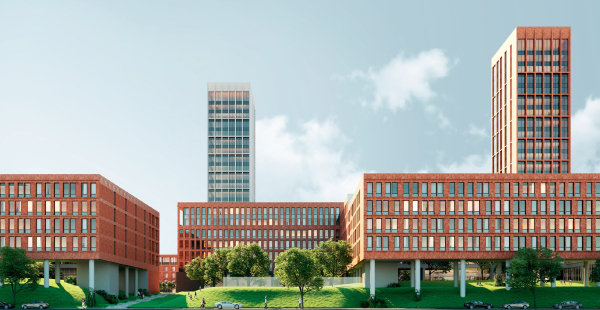 The concept of the housing project near Samara Arena / competition project 2020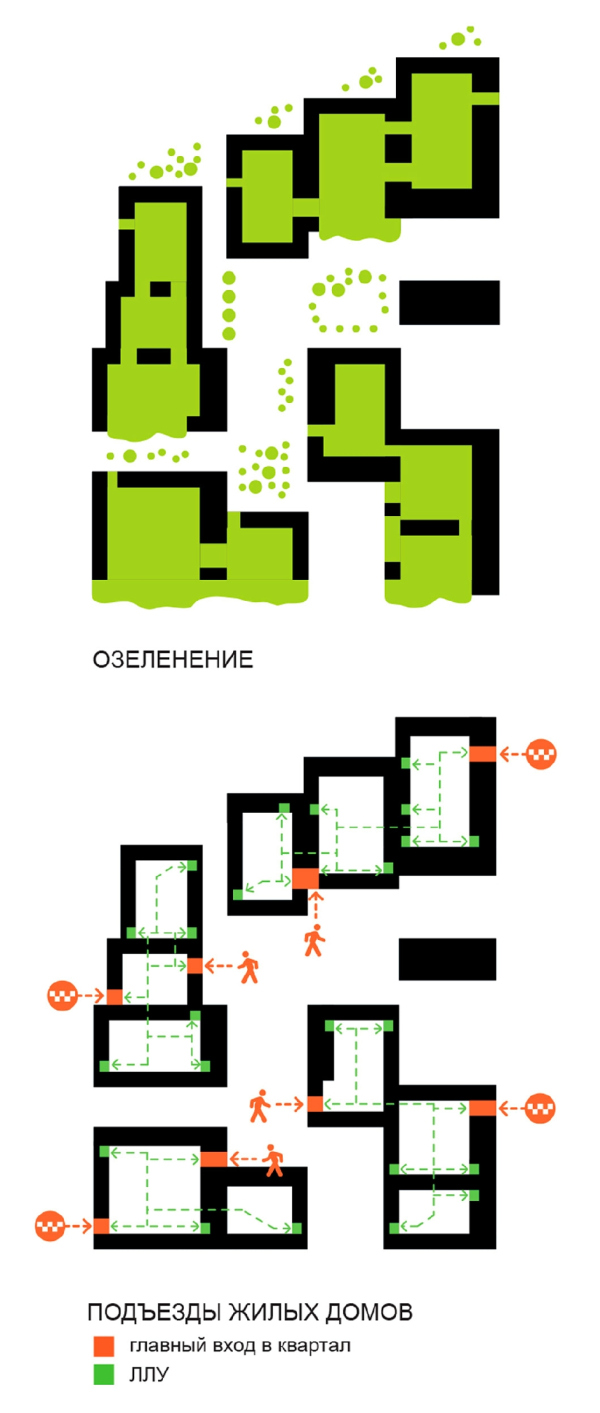 The concept of the housing project near Samara Arena / competition project 2020So, let us note that in addition to the planning and typological experiment in the project there is a significant proportion of responding to specific circumstances, and even of contextual “molding” of the complex that responds to the specifics of the environment: the difference in elevation and the contrast between the rigidity and activity of the environment near the highway, and natural relaxation on the border with the gardeners’ non-commercial partnership. Inside the complex, also appears an image teetering on the verge of old industrial architecture and a renaissance city, or maybe even post-renaissance, which emotion-wise can be likened to the postwar Milan: the towers, and the facades, reasonably straight, yet diverse in their texture. On the city squares, just like on the outside, there are quite a lot of walls, the glass does not prevail at all, and the space itself makes a smooth transition from the “city” square, regular and fully paved, to the more “lively” pond and little park. This vicinity, just as the diversity of the facades, ensures some kind of “gradient of impressions” built on the same leitmotif of going from city bustle to natural relaxation, which generated the yards open southward. The concept of the housing project near Samara Arena / competition project 2020The concept of the housing project near Samara Arena / competition project 2020The concept of the housing project near Samara Arena / competition project 2020At first glance, much in this project is quite familiar, since it corresponds to modern trends: from the combination of blocks with the “correct” height of 5-7 floors with dominant towers, looking as if they were taken from a textbook on modern urbanism, and ending with the predominance of small apartments with a general variety of layouts, courtyards without cars, front gardens, public spaces, and a balance of natural and urban environment. Yet, on the other hand, everything is very unusual. First of all, this is the asymmetry and the ostentatiously varied character of the city block “molecules” that look even more like cells viewed under a microscope: they stick to each other, split apart, their membranes sometimes thicker and sometimes thinner, and they respond both to inner logic and outside irritators. Another unusual thing is the set of layout options – it is common knowledge that gallery and corridor houses are not exactly popular nowadays. And why not? Provided the galleries prevail over corridors and are well lit (well, still worse than in the case of a “living room” layout, but still), this option could be in some respects quite attractive. Of course, I am not sure how many chances it stands to shake the already formed market trends: the market is a pretty inertial thing, and, unless forcefully taken out of its comfort zone, it will stick to time-tested solutions. Still, though, let’s not forget that this is an experimental project, even though it would be really interesting to implement it – it is highly unlikely that this will ever take place in Moscow with its trend to build complexes consisting of three towers each 200m high, but in Samara something like this is worth a shot. 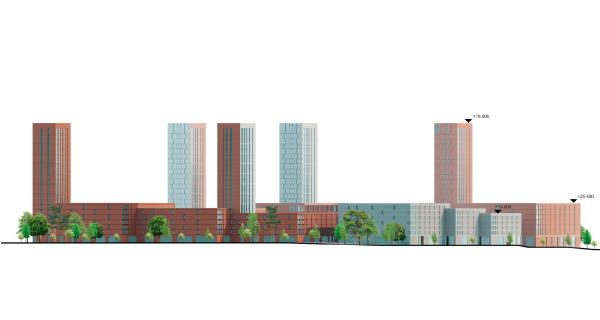 The concept of the housing project near Samara Arena / competition project 2020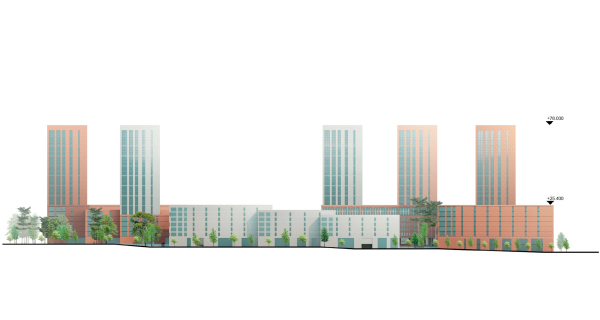 The concept of the housing project near Samara Arena / competition project 2020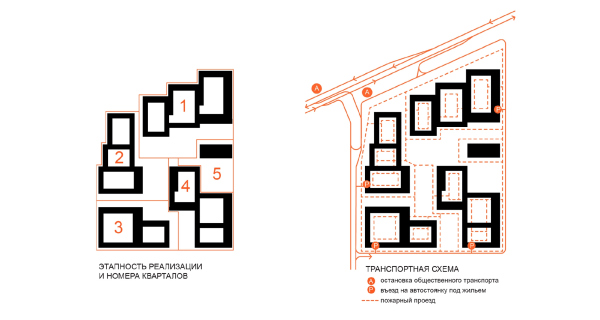 The concept of the housing project near Samara Arena / competition project 2020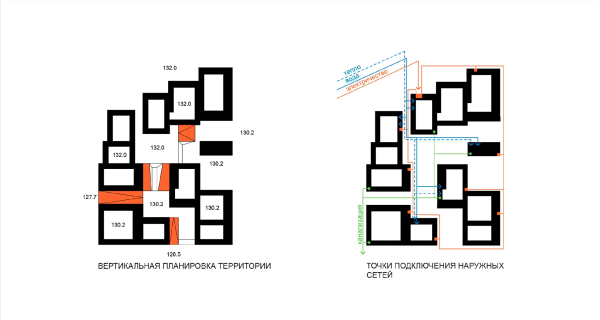 The concept of the housing project near Samara Arena / competition project 2020 |
|




